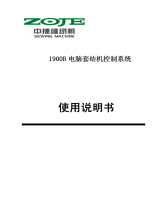
english
14
model
a
, to release it press the button
for 3 seconds (2.3.11). Models
do
not have the automatic lock function.
2.2 Setting the temperature. Press the
, buttons (2.2.1, 2.2.2). Press
,
(2.2.3), or turn the control (2.2.4, 2.2.5).
When you have selected the temperature
you want, the indicator lights (2.2.7) will show
you the real temperature or you can press
the keys for 5 seconds to see this
,
(2.2.6, 2.2.7), or
,
(2.2.8). buttons
for fi ve seconds. The temperature will fl ash.
Models
does not have this function.
Recommendation: The recommended
temperature for your freezer is
.
If you want to freeze, the recommended
temperature is
. See 2.3. (Quick cool
function)
Remember that the temperature inside the
freezer depends on the ambient temperature,
the location and how often the freezer door is
opened.
2.3 Freezer functions.
Fast cooling function: This function makes
the freezer work at the minimum temperature
for a maximum of 52 hours. We recommend
you use this function whenever you put large
quantities of food in the freezer. You should
activate the function 24 hours in advance. To
activate and deactivate it: Press
(2.3.1,
2.3.2) or
(2.3.3, 2.3.4, 2.3.5). In the
model
the screen shows
while
the function is active.
ECO setting: The ECO setting gives
substantial energy savings and keeps the
freezer at a stable temperature. This function
stays active even after a power cut. When
using this mode, we recommend you store
all the food on the shelves in the centre. To
activate or switch off press
(2.3.6, 2.3.7,
2.3.8). In the model
the screen shows
while the function stays activated.
Models do not have this option.
Quick cooling function: Put the bottle or
bottles into the freezer and press
or
for a few seconds until the
icon appears (2.3.9, 2.3.10). The freezer will
supply cold for 15 minutes, after which time
the function fi nishes,
will fl ash and an alarm
will sound for 20 minutes, telling you it is
time to remove the bottle to prevent it from
bursting. Disable the alarm by pressing
in
or
for a few seconds. If the
function is interrupted by a power cut, when
the power comes on again, it will fi nish and
the alarm will sound.
Lock: The lock is used to prevent the
appliance settings from being changed by
accident or due to interference by children.
The display shows the
icon when the
appliance is locked. Press
(2.3.11) or
(2.3.12). The screen will show
alternating with the normal display while the
function is activated. Models
do not
have this option.
2.4 Arranging food in your freezer. Food must
be stored in the right area to make sure that it
is kept correctly (2.4.1):
1. Medium-sized containers
2. Ice cream
3. Twist Ice (optional feature)
4. Medium-sized containers
5. Medium-sized containers
6. Large-sized containers
7. Medium-sized containers
Eutectic containers (Depending on the
model): This appliance is supplied with
eutectic containers (2.4.2) designed to
increase autonomous operation during power
failures and reduce energy consumption. The
containers should preferably be placed in the
top part of the appliance.
2.5 TWIST ICE. This is an accessory in your
freezer that makes up to 24 ice cubes. If your
freezer has Twist Ice, take out the ice drawer
(2.5.1). Fill the ice tray without going over the
level (2.5.2). Replace the ice drawer being
careful not to spill the water (2.5.3).
After two hours the ice cubes will be ready
to use. Turn both knobs several times until
the ice cubes fall out ((2.5.4, 2.5.5). Open the
lower drawer to take them out (2.5.6).
2.6 Switching the freezer off. Press
for 3
seconds or press
until no temperature
appears on the display (2.6.1, 2.6.2, 2.6.3),
or turn the control to the off setting (2.6.4,
2.6.5). The display
model or the On
light
models will switch off.
2.7 Recommendations for use.
• Do not open the doors for longer than
necessary or put hot food into the freezer.
This will ensure your freezer works more
effi ciently and will avoid increased energy
consumption.
• If you have a NO FROST freezer, do not
block the ventilation grills and leave some
space between the food so the air can
move fl ow freely.
• Do not put bottles containing fi zzy drinks
or glass bottles containing liquid in the
freezer, because they may burst.




















